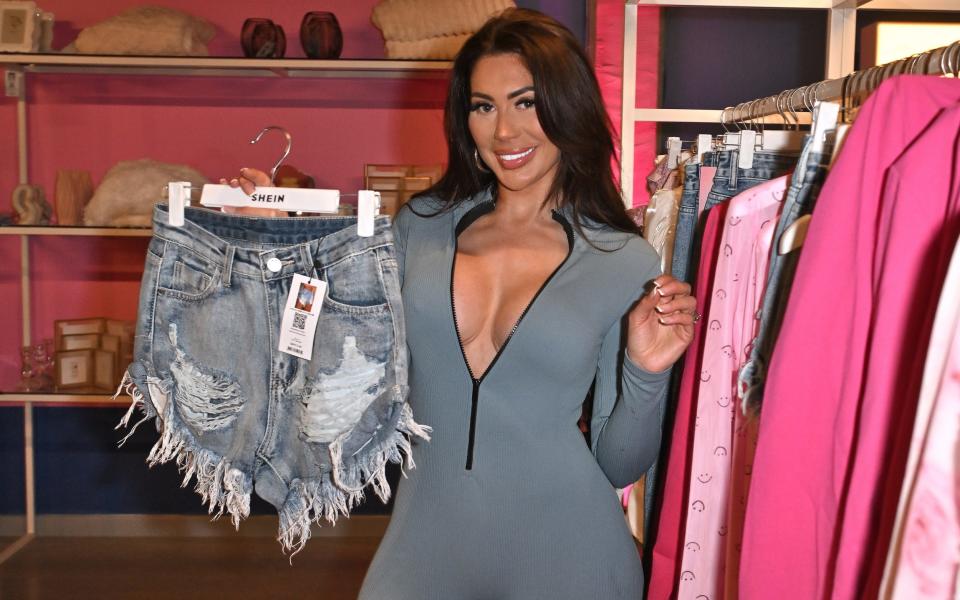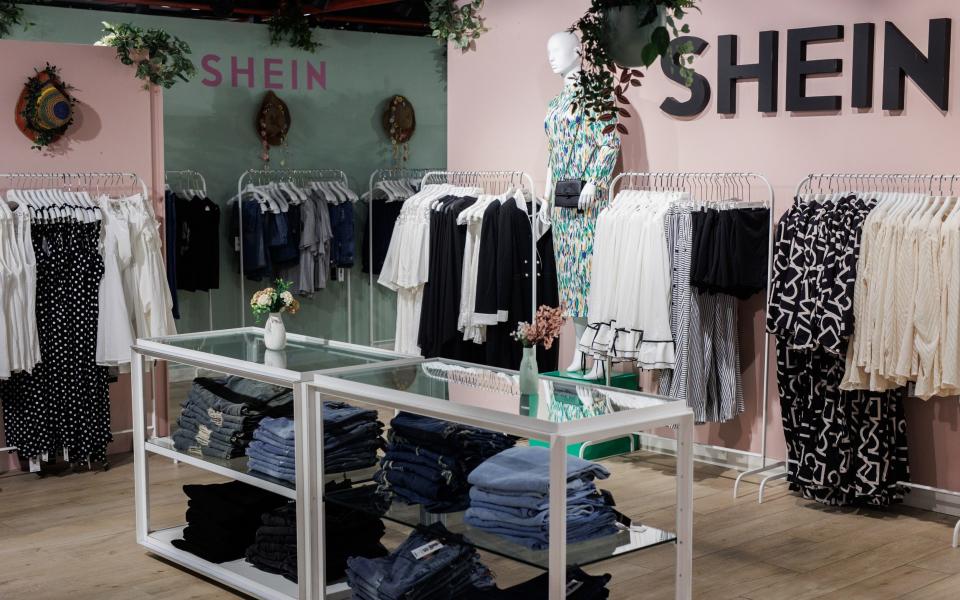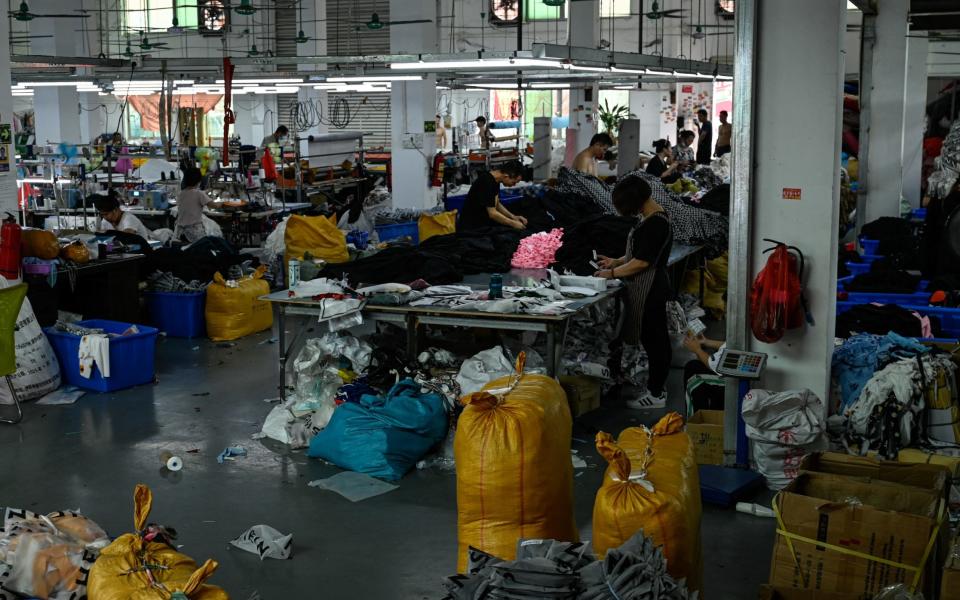How Shein became a multi-billion-pound fashion brand selling T-shirts for £1.99

How much should a fresh summer wardrobe cost in 2024? Well, as soaring running costs are forcing fashion retailers to jack up prices on the high street, a handful of T-shirts, shorts and swimwear might easily set you back £100 or more.
But on Shein, the same order can be delivered directly to your door for as little as £50.
The Chinese fast-fashion giant is preparing to join the London Stock Exchange in a £50 billion deal that would be the biggest share debut for over a decade.
Reports suggest the online retailer is preparing to file registration documents with the Financial Conduct Authority ahead of a listing this year, although sources close to the company have dampened speculation Shein will shortly join the market.
The news has been met positively by the Labour Party, who last week confirmed its MPs had met with the retailer, among “a range of companies including Shein that are looking to invest in Britain”.
This is not the first time the company has had its eye on these shores: this year the fashion giant hired ex-PrettyLittleThing buying director Gemma Dunne, tasking her with building a new brand inspired by UK trends.
So far she has created the Musera line of clothes – items from which include a bikini for £4.99 and loose-fitting trousers for £11.49.

Shein’s meteoric rise might be puzzling to anyone over the age of 40, as the brand is almost exclusively the preserve of Gen Z and young millennials. It is unknown whether the retailer is profitable, but even within the wider context of fast fashion, its success has been astonishing as other brands visibly struggle to stay afloat.
In May it was reported that UK-based rival Boohoo had swung into £95 million of debt, cutting some 1,000 jobs across its warehouses and administrative posts, while ASOS admitted sales had plummeted by 18 per cent year on year for the first six months to 3 March, contributing to an underlying pre-tax loss of £120 million, up from £87.4 million the year before.
Shein, meanwhile, has gone from strength to strength: it is the world’s most-Googled clothing brand and is set to surpass Zara with sales of more than £1.3 billion in Britain last year. Central to its appeal are those low prices – a quick glance at its men’s section throws up T-shirts and tank tops for as low as £1.99, and shorts for £2.49.
How Shein manages to undercut its rivals as aggressively as it does without meeting a similar fate depends on who you ask. The company claims its savvy supply chain efficiency allows it to trim costs, while critics have suggested that Shein cleverly skirts around international tax laws.
Even measured against its competitors, Shein has zigged where others have zagged. In the early stages of its rise, the company spent very little on marketing, for example.
Traditional advertising was eschewed in favour of sending packages of clothes to social media influencers.

The retailer typically targeted users of TikTok and Instagram with mid-sized but devoted followings, who would then film “haul” videos where they try on different outfits in rapid succession.
Shein does not operate traditional brick-and-mortar stores, vastly reducing its overheads. The company also operates a very different design process than other fashion retailers. Rather than create designs in-house, and outsource production to manufacturers, Shein outsources the bulk of its design work to outside companies, and most of its independent suppliers both design and produce clothing.
The result is that Shein’s website lists thousands upon thousands of new designs every day. Claims reach as high as 10,000, which is astronomical even by fast fashion standards.
Shein’s design pipeline is algorithmically driven, a company source says. Designs are suggested based on what customers are already searching for, then made in small “test” quantities. Should an item sell well, Shein will order more, while less popular designs are dropped.
A company source says this is why some Shein orders can take up to three weeks to arrive, unlike the rapid dispatch times of other fast fashion brands like ASOS or Boohoo.

As a result, Shein says the company wastes very little and claims this is the main factor in its low prices. “It means if you have a rubbish summer you’re not holding onto a load of white t-shirts when everyone wanted a black jumper,” a company source says.
The brand has nonetheless drawn criticism for the allegedly poor working conditions in its factories. More recently, Marco Rubio, a US senator in the race to be Donald Trump’s presidential running mate, sent a letter to the Chancellor this week calling for an investigation ahead of Shein’s potential £50bn London stock market listing, accusing the company of using “slave labour and sweatshops”.
A spokesman said Shein has “a zero-tolerance policy for forced [sic] labor” and is “committed to providing a safe and fair work environment to all our suppliers’ employers”.
It is not the first time Shein has faced such criticisms, and it has repeatedly had to deny allegations that its factory staff are overworked. Channel 4 documentary Untold: Inside the Shein Machine, alleged staff at one factory worked 13-and-a-half-hour days with no fixed structure for days off. Shein strenuously denied allegations made in the documentary.

Experts have also pointed to Shein’s approach to international trade tax laws.
The company maintains it “complies with tax laws in the regions where it operates and is subject to the same tax regulations as industry peers”, but those peers have nonetheless accused Shein of exploiting loopholes.
In May, a chorus of executives including Boohoo CEO John Lyttle said Shein avoided import duties by shipping parcels individually (companies do not have to pay tax on shipments worth less than £135).
Theo Paphitis, owner of Robert Dyas, Ryman, and lingerie brand Boux Avenue, said there was a “big slug” of foreign companies avoiding shipping tax by shipping orders directly from China.
“The government is not plugging loopholes,” he said. “It’s becoming absolutely clear that the emperor has no clothes on.”
The Treasury said its customs and tax regime for low-value imports “balances reducing burdens for retail businesses and consumers buying goods from overseas with levelling the tax playing field for British businesses.”
Shein, meanwhile, consistently maintains that its low prices are down to “supply chain efficiencies and operational proficiencies” cultivated over the years.
For now, Shein’s ascent shows no sign of slowing down. That much is clear on TikTok, where close to a million videos have been posted under the hashtag #sheinhaul, each showing a young woman breezing through hundreds upon hundreds of outfits.
In one clip, a TikToker named Abigail can barely hold her haul in both hands.
A scroll through the comments suggests something soberingly illuminating – that Gen Z are more than happy to put their usual sustainability concerns to one side for a pair of bright red trousers.

 Yahoo News
Yahoo News 
